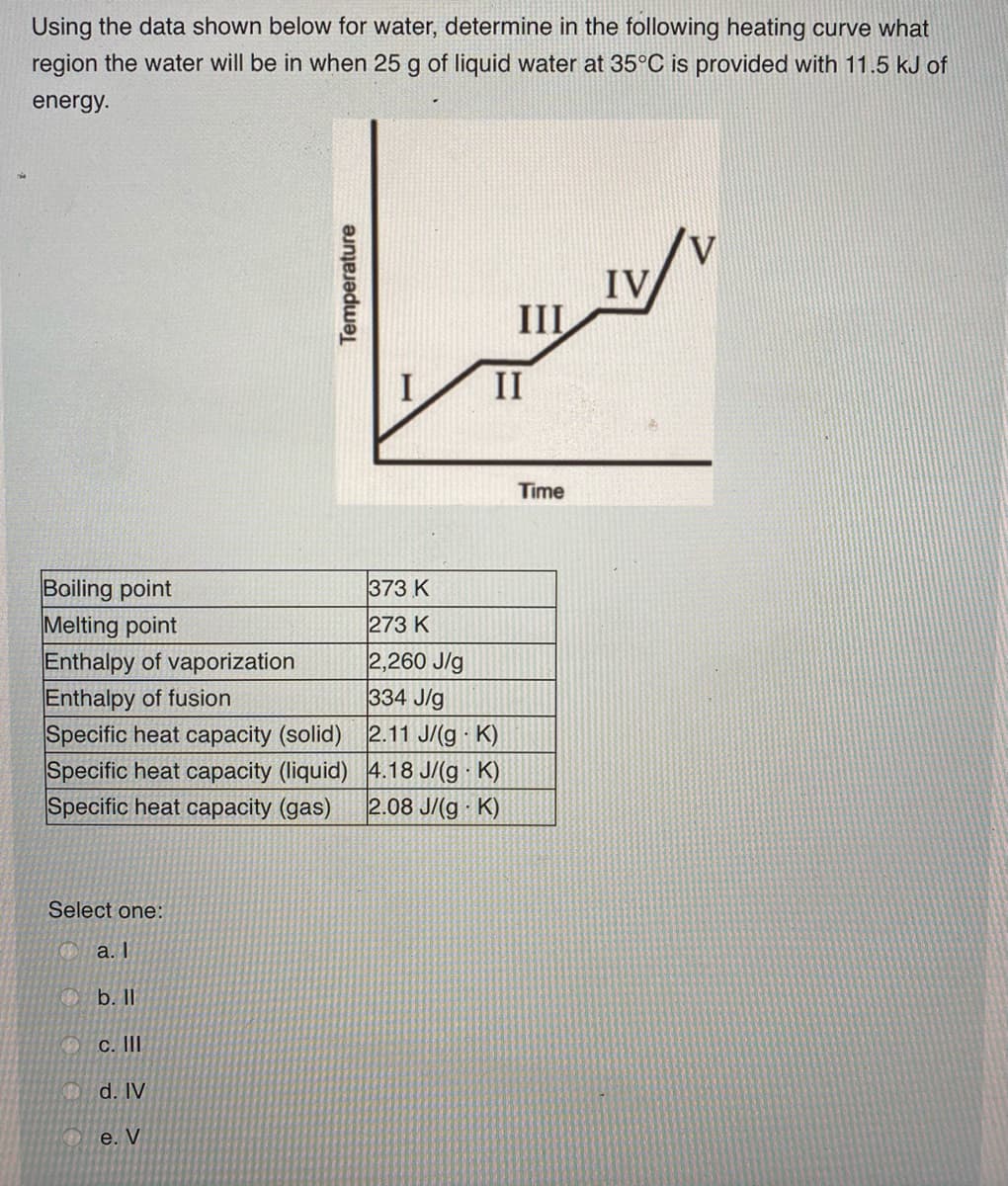Using the data shown below for water, determine in the following heating curve what region the water will be in when 25 g of liquid water at 35°C is provided with 11.5 kJ of energy. IV III II Time Boiling point Melting point Enthalpy of vaporization Enthalpy of fusion Specific heat capacity (solid) 2.11 J/(g · K) Specific heat capacity (liquid) 4.18 J/(g K) Specific heat capacity (gas) 373 K 273 K 2,260 J/g 334 J/g 2.08 J/(g K) Select one: a. I b. II с. d. IV O e. V Temperature
States of Matter
The substance that constitutes everything in the universe is known as matter. Matter comprises atoms which in turn are composed of electrons, protons, and neutrons. Different atoms combine together to give rise to molecules that act as a foundation for all kinds of substances. There are five states of matter based on their energies of attraction, namely solid, liquid, gases, plasma, and BEC (Bose-Einstein condensates).
Chemical Reactions and Equations
When a chemical species is transformed into another chemical species it is said to have undergone a chemical reaction. It consists of breaking existing bonds and forming new bonds by changing the position of electrons. These reactions are best explained using a chemical equation.

Trending now
This is a popular solution!
Step by step
Solved in 2 steps with 2 images









